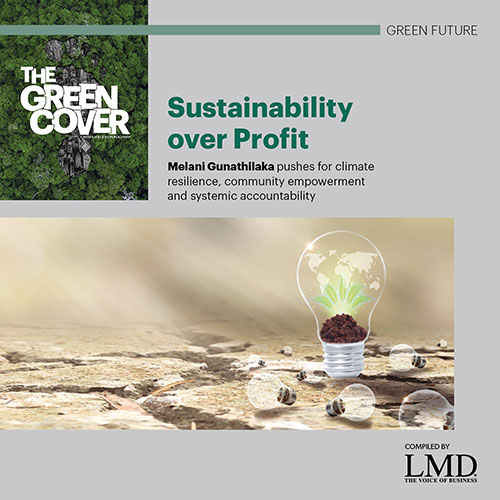VIABLE RENEWABLE ENERGY OPTIONS
Solar, Hydro and Wind Power
Prabath Wickramasinghe cites the urgent need for a transition to renewable energy sources
“The rapid development of renewable energy is the only solution to the energy crisis we are in. The present load shedding erupted due to the scarcity of dollars to import diesel, coal and heavy fuel. Therefore, we must replace dollar related fossil fuel with renewable energy as this will be paid in Sri Lankan rupees instead of dollars,” emphasises Eng. Prabath Wickramasinghe, Executive Committee Member and Past President of the Small Hydro Power Developers Association.
The Ceylon Electricity Board (CEB) spends close to US$ two billion annually for diesel, heavy fuel and coal imports. If even 25 percent of the electricity produced by fossil fuels is converted to renewable energy, the saving would be approximately 500 million dollars over a year and US$ 10 billion over a period of 20 years.
Consistency in government policy is another requirement, he adds. The overall growth of non-conventional renewable energy (NCRE) penetration is below 20 percent of the total electricity supply as of 2022.
Mini hydro makes up eight percent of this total. The mini hydro industry came to a standstill in 2015, after CEB stopped issuing letters of interest for new projects after that year. The roof top solar industry grew to 550 MW by 2022 but faced limitations from the Ceylon Electricity Board. Wind power meanwhile stands at around 150 MW with private power producers.
A transparent competitive tender process was adopted by the 2015-2019 government for utility scale ground mounted solar and wind power, which paved the way for development of the sector, he notes, adding, “However, from 2019 up to date, the process was abolished and opaque selection processes were started for providing licenses, which led to corruption and decline of the sector.”
Wickramasinghe, who is also an executive committee member of the Solar Industries Association, goes on to add: “An example is the controversial Adani deal where permission was given for the development of a 500 MW wind power plant in the north without a competitive or transparent bidding process.”
He continued: “The quoted prices are approximately 30-40 percent higher than world market prices. Therefore, the government should adopt a bidding process when providing licenses for utility scale ground mounted solar and wind power.”
Solar and wind power have become mainstream power sources. The cost of utility scale solar in international tenders for large scale projects in the range of 50-100 MW has become as low as five US cents, similar to wind power. On the other hand, mini hydro is an expensive source compared to solar and wind as international feed in tariffs are in the range of 10-12 US cents – akin to rooftop solar.
“The current low and medium voltage distribution network of CEB can absorb another 1000 MW of the rooftop solar sector without any cost for additional infrastructure development but a justifiable feed in tariff is required. The Solar Industries Association has been fighting for years for a favourable rupee tariff,” he informs.
The government can however avail itself of low hanging fruit at a very affordable Sri Lanka Rupee tariff in his view. According to studies by CEB and the Ministry of Power and Energy, the present 550 MW rooftop solar absorption could be increased by another 1000 MW without any additional infrastructure improvements. Further, approximately 800-1000 MW of ground mounted solar could be connected to the existing 33 kV distribution network. An additional 600-800 MW wind power could also be accommodated. Approximately 100-200 MW mini hydro could be connected in higher elevation areas.
The combined capacity of economically produced NCRE that can be harnessed is therefore more than 3000 MW.
Going ahead, Wickramasinghe suggests that utility scale ground mounted solar and wind power tenders be floated every six months to accelerate renewable energy.









